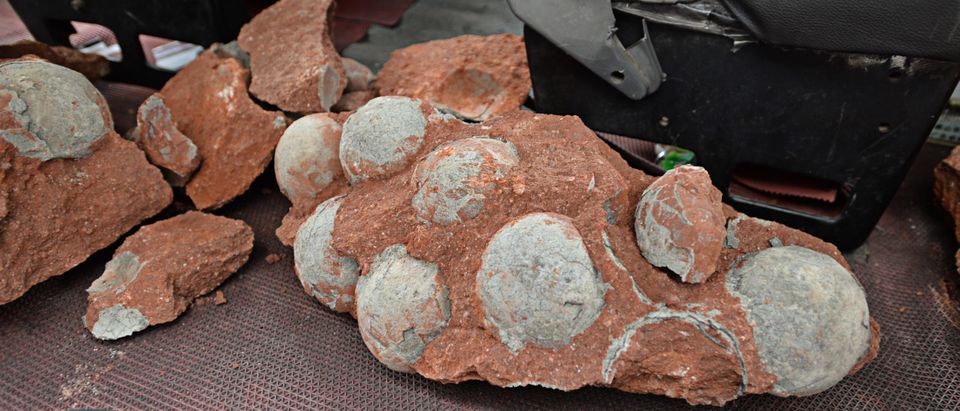A paper published in the online journal, iScience, outlined the discovery of an exquisitely preserved fossilized dinosaur egg shining new light on the potential link between modern birds and dinosaurs found at a cretaceous geological formation located in Ganzhou, China.
The paper, published Tuesday, discussed the discovery of the articulated Oviraptorid embryo inside an elongated egg belonging to the Elongatoolithidae egg family typically associated with the Oviraptor dinosaurs, named from the Latin terms “egg” and “robber.”

NEW YORK, NEW YORK – SEPTEMBER 17: A Tyrannosaurus Rex dinosaur fossil skeleton is displayed in a gallery at Christie’s auction house on September 17, 2020 in New York City. (Photo by Spencer Platt/Getty Images)
The apparent late-stage embryo was found to be in a “tucking” position, something previously thought to be found only in birds.
“The head lies ventral to the body, with the feet on either side, and the back curled along the blunt pole of the egg,” the paper states, suggesting that “prehatch oviraptorids developed avian-like postures late in incubation.”
The scientists involved theorized that the tucking technique could have originated from non-avian theropods, and will be hoping for more examples to further expand on this theory in the future.
Oviraptors have been discovered in brooding positions like modern birds however the discovery of this fossilized embryo show the Oviraptor in a position not unlike that of modern birds and something not previously recognized outside of avian dinosaurs.
“This posture was previously not recognized in any dinosaur embryo,” said Fion Waisum Ma, a vertebrate paleontologist at the University of Birmingham in England and a co-author of the paper, calling the 23cm long embryo “one of the best preserved dinosaur embryos ever found,” the Wall Street Journal reported.
The fossil dubbed “Baby Yingliang,” was discovered in the 2000’s but wasn’t recognized until 2015 when construction on the Yiangling Stone Natural History Museum began and boxes of fossils were sorted through, according to CBS News.
“Museum staff identified them as dinosaur eggs and saw some bones on the broken cross section of one of the eggs,” Lida Xing of China University of Geosciences, Beijing, CBS News reported.
Eggs containing embryos are rare because of the fragility of the bones however, one like the one detailed in the paper and even rarer still, according to the WSJ.


